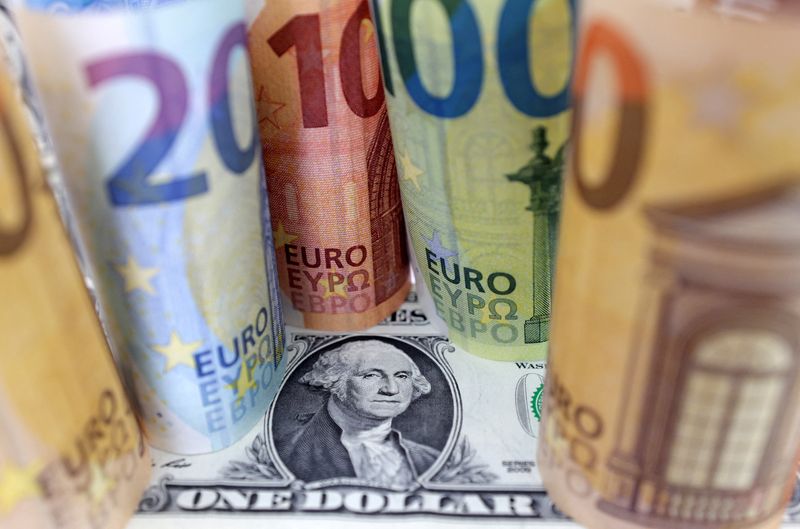Currency volatility surges before U.S. election
By Harry Robertson
LONDON (Reuters) - Gauges of expected volatility in currencies jumped on Wednesday as investors braced for the U.S. presidential election, which could result in big changes to economic policy and swings in the dollar.
Single-week implied volatility in the euro-dollar currency pair surged to its highest level since March 2023, when the U.S. was dealing with a mini-banking crisis, LSEG data showed. It was set for its biggest one-day rise since 2017.
Implied single-week sterling-dollar volatility also hit its highest since March. The measures are derived from the prices of options, which investors use to hedge against - and bet on - moves in the underlying currencies.
One-week options contracts now cover the day after the election on Nov. 5, in which Republican former president Donald Trump and Democratic Vice President Kamala Harris are neck and neck in polls.
Investors in recent weeks have taken their cues from betting markets, however, which have shown increased chances of a Trump victory that could lead to higher tariffs and fiscal deficits, both potentially pushing up U.S interest rates and boosting the dollar.
"The binary nature of next week's contest implies significant FX moves after the event," Barclays strategists, led by Marek Raczko, said in a research note.
"The market expects the bulk of the FX reaction to materialise in the week around the election. This can be justified by two things: first, the result might still be uncertain on the day after the election, and second, the Fed (U.S. Federal Reserve) is scheduled to meet this same week."
The dollar index rose to a three-month high of 104.63 on Tuesday, driven partly by recent strong U.S data and partly by investors' rising expectations of a Trump victory.
Past U.S. elections have elicited an even bigger response in the run-up to the event. The week before the 2016 election, which Trump won, one-week euro implied volatility hit nearly 14%, while one-week sterling implied volatility topped 13%.
Source: Investing.com
